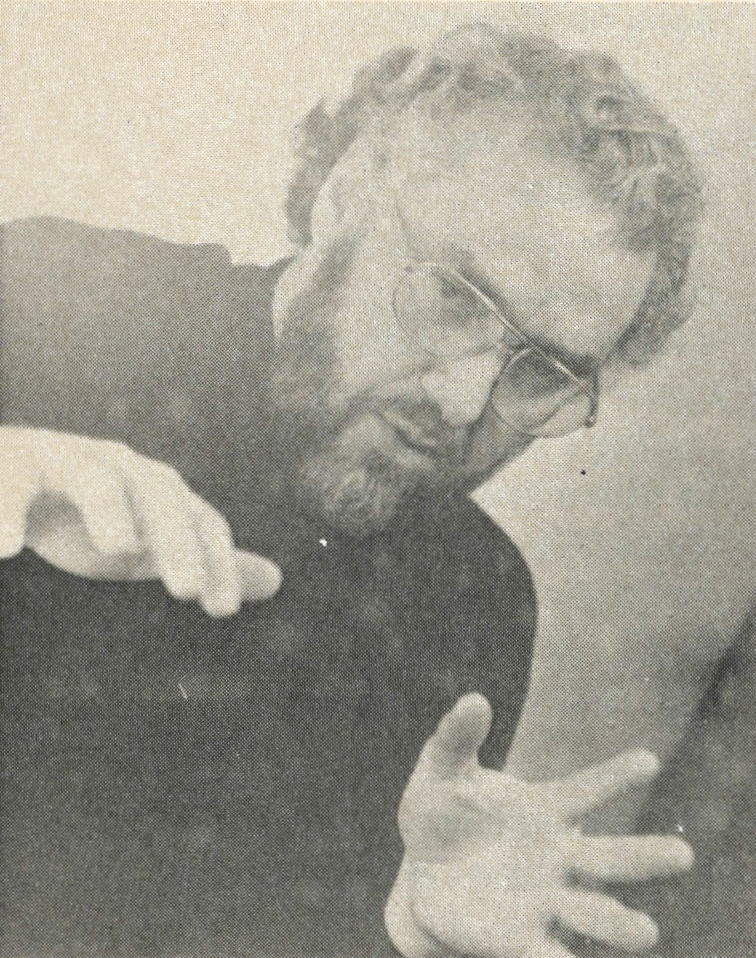Seed Catalogue by Robert Kroetsch

The seed catalogues came (still come?) in January, a promise in the coldest, darkest season that spring and warmth and growth would surely come again. Not that a harvest was certain; even spring moisture was often doubtful. The seed catalogue was a book of dreams. It told what could be in the most ideal of situations; it renewed the story of the Garden. “Into the dark of January / the seed catalogue bloomed,” seeding dreams and hopes, visions and imagings. A perfect model for a poem, then. An elementary place for Kroetsch to begin this chapter of his prairie dream/document. To begin with the problem of growing things on the prairie. To begin where the farmer begins: how do you get a good crop out of this stubborn land? It’s a question that he keeps asking all year round. Will there be enough snow, or enough rain, or enough markets? Will there be too much wind, or hail, or rust, or grasshoppers? The seed catalogue brings the question not only to the farmer, but also to the wife trying to grow vegetables and flowers, to all of us, to me trying to get a few tomatoes and carrots out of four inches of baked clay in a backyard in Lethbridge.
A catalogue is broad, inclusive; it gives brief notes (often too brief, often misleading) on a whole range of articles. In the epic (for Kroetsch, perhaps, the anti-epic) the catalogue proves the involvement of many men and much material in a grand action. And seed, in the broadest sense, is the source of anything, therefore of everything.
“Seed Catalogue” is a compendium of prairie themes, of elemental questions. How do you grow? Kroetsch keeps asking. How do you grow a gardener? How do you grow a lover? How do you grow a prairie town? How do you grow a past? And most persistently: how do you grow a poet?
The questions are the leitmotif. Kroetsch teases with the epic possibilities: his muse is forgetfulness; he lacks a story, lacks a past, lacks the epic poet’s confidence. Instead of singing of arms and the man, he puzzles about seeds and the poet. When I first read “Seed Catalogue” I jotted down these lines in order to try and locate the groping hesitancy that lies behind the poem’s various voices.
Huh? how to grow a poet, eh?
Wull-l-l, don’t rightly know.
Yuh could try manure, a lotta manure.
But, yuh gotta have rain, yunno.
And black soil.
Don’ believe in any of these newfangled
chemicals, fertilizers and all that.
How d’yuh grow a poet. Gee that’s a hard one.
Not that Kroetsch writes in this forced dialect, but he does look for a casual, spontaneous uncertainty. Particularly in the early sections of the poem, when the poet is trying to establish his presence, there is an aggressive, leaning-across-the-table insecurity about statements such as “This is what happened” or “You’ve got to understand this” or “This is a fact.” And through it all runs Kroetsch’s profane colloquialism, reiterating, it seems, the seed that Whitman cultivated: “Slang, profoundly consider’d, is the lawless germinal element, below all words and sentences, and behind all poetry, and proves a certain perennial rankness and protestantism in speech.”
In fact the inspiration of Whitman and Williams is always close at hand as Kroetsch catalogues many literary forms: the quotations from an early A.E. McKenzie catalogue, the prose stories, the lists of vegetables and flowers, his own impressive lyrics, the child rhymes, and the quotations from other writers. The tentativeness of growing things on the prairie, then, is reflected in the very form of the poem itself. The long random catalogue puts chance and improvisation, those elements so central to art and to agriculture, close to the surface where we are repeatedly conscious of their role. The weakness of such a variety of forms is a frustrating amorphousness, the strength is an exuberant fertility.
Within the long poem (in a note Kroetsch describes “Seed Catalogue,” “The Ledger” and “How I Joined the Seal Herd” as parts of a continuing poem Field Notes) with its shifting, multiplying emotional centres, the poet is able to suggest the breadth of his culture, to somehow make a whole out of the fragments of his sensibility. It would take a much longer piece than this even to begin to show the synthesis and correspondences that Kroetsch sets up. One of the most intense moments in the poem, for example, is Section 9 where the poet thinks back to his German ancestors and the “strange planting” of bombs exploding in war. He tells the story of a cousin who is killed “while bombing the city that was his maternal great-grandmother’s birthplace.” Two members of the same family, unknown one to the other, both dying in the city of Cologne a century apart: the first member of the family to return to the Old Country takes with him a cargo of bombs. Kroetsch wonders about this strange planting:
A strange muse: forgetfulness. Feeding her far children to ancestral guns, blasting them out of the sky, smack/ into the earth. Oh, she was the mothering sort. Blood/ on her green thumb.
In Section 1 Kroetsch tells a rather slight anecdote about falling off a horse as a child and being laughed at by the hired man. Kroetsch’s way of growing a poem is to listen to the echoes of such at first apparently insignificant incidents and images until they come to take on mythic (anti-mythic?) proportions. A glimpse of the horse standing still in the rain as his mother is buried. Al Purdy galloping a cariboo horse through the dining room atop the Chateau Lacombe. Pete Knight, King of all Cowboys, killed by a fall from his horse. Uncle Freddie building his perfectly designed horse barns. Kroetsch’s uneasy realization that farmers no longer use horses. Dying is falling from a horse. Are the energy, the sexual power, the magnificence of the horse gone? No,in the last section of the poem there are still Calgary Stampedes and movies and Cindy, a horse, up to her hips in brome grass.
When Kroetsch comes to think about bombs and shells and cities in Section 9 of the “Seed Catalogue,” his text is superimposed on screens of pages from the 26th annual McKenzie’s Catalogue advertising seeders and cultivators and chemical aids for the farmer. Thus, the design of the book, lovingly created by Eva Fritsch, creates another poem, or expands the possibilities of the poem. When the poem turns to airplanes and guns and the question of design, the actual catalogue (i.e. the historic artifact; it is difficult to decide which is the actual catalogue) makes us think of the implications of mechanization and modern chemistry for growing things on the prairie.
“Seed Catalogue,” in itself, is an intricate and multiplying thing. Turnstone’s care with the design of the poem makes it so much more so. The poem is printed in dark green on light, sky-blue paper. On each page, under the text of the poem, are beige silkscreens of pages from McKenzie’s Seed Catalogues. Across from and beneath Kroetsch’s account of “playing dirty” in the granary lies McKenzie’s celebration of Seed Wheat: “It takes only 1½ to 2 bushels to seed an acre, why take a chance on anything but the best seed?” Facing the fine section on the absence of a prairie past is the presence, the poem, made by the alphabetical lists of the flowers McKenzie sells: “Loves Grove. Love in a Mist. Love Lies Bleeding” or “Monk’s Hood. Moonflower. Morning Glory. Monkey Flower. Mourning Bride.” As Kroetsch would say, trying to assure himself that he is really finding poems springing up everywhere: “This is a fact.” One can go on and on discovering more poems here. Kroetsch urges us to get involved: “Readers are invited to compose further sections.” It’s a poem which catches compellingly the spirit of prairie collectivism.
All of which doesn’t leave me space to say much about the other 14 poems of this book. Except to say that after “Seed Catalogue,” which seems to me such a fertile and germinal poem, they come as something of an anti-climax. Only a few approach the accomplishment of the best of The Stonehammer Poems. Kroetsch is full of play in these other poems, witty, ingenious, often funny, and more self-revealing. But coming after “Seed Catalogue” they are apt to seem a little too reliant on verbal exercising, a little too light on feeling. Let me say only that I’d like to spend more time with these poems…after I read “Seed Catalogue” again.
I spent four years as an undergraduate in a library/classroom building named after A.E. McKenzie. I remember how mysterious the McKenzie Seed Building, an almost windowless hulk in the middle of Brandon’s downtown, seemed to us as kids. How do you grow a past? Kroetsch is dreaming one for us, in a poem that keeps touching us very personally. Like McKenzie’s incredible Brome Grass, poetry on the prairie is flourishing. “No amount of cold will kill it…Flourishes under absolute neglect.”
Lawrence Ricou is an editor and critic who teaches at the University of Lethbridge. Most recently he edited 12 Prairie Poets for Oberon Press.

